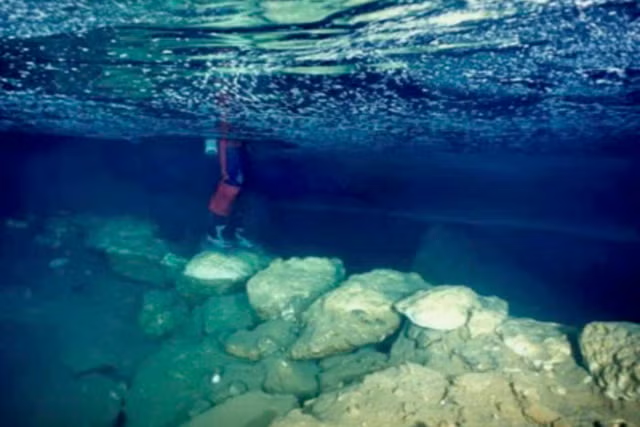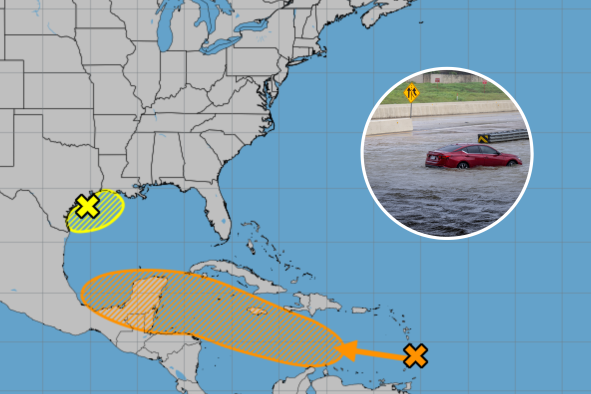Researchers have shed new light on a sunken ship lost in the 18th century off the coast of Norway in intriguing circumstances.
The wreck of the Providentz was discovered in late 2020 in the sea near the town of Mandal—located in the south of the country—around 300 years after its sinking. Investigations conducted this year have now yielded fresh insights into the vessel.
The Providentz was an Irish merchant ship that sailed out of Cork harbor in Ireland bound for Arendal, Norway, on September 22, 1721.
At the time, the ship, which belonged to the influential Lavit family of Cork, was laden with a cargo of butter, corn, grain and malt, according to archeologist Sarah Fawsitt.
On October 16, the vessel arrived close to Mandal, where it waited for better weather conditions before completing its journey. A couple of weeks later, a local pilot came on-board to help guide the ship safely back out to sea—a normal practice.
But despite fine weather and ample moonlight on the early morning of November 9, the ship grounded among the islets and reefs off Mandal, ripping a hole in the port side of the vessel. The Providentz quickly sank, although the crew managed to escape unharmed.
A court trial was held later that month to establish the cause of the sinking, to which the Norwegian pilot never showed up, sending a letter instead. The pilot claimed that some of the crew members, including the ship's mate, were drunk at the time of the accident, and that the vessel was incapable of steering properly.
But the crew blamed the sinking on the pilot, asserting that he made a big mistake by giving an incorrect command in which he confused starboard and port.
The ship lay undiscovered for centuries until December, 2020, when members of the Mandal dive club located its remains.
"The local divers had been looking for this wreck for more than 40 years," Jørgen Johannessen, an archaeologist with the Norwegian Maritime Museum who was involved in this year's investigations, told Newsweek.
Shortly after the discovery, Johannessen and colleagues went out to research the wreck, determining that it was the remains of an 18th-century vessel.
"We knew that an Irish merchant ship sank in 1721 in the area," Johannessen said. "The initial research was done to pick up a few objects that were vulnerable to looting. Also we wanted to understand more of the hull and the construction. Lastly we wanted to verify if this really was the Providentz. It surely was as we found two clay pipes with the stamp 'Cork'—the port that the ship came from."
In April of this year, Johannessen and colleagues conducted a fresh research excavation with the aim of understanding whether the ship was built in a Dutch or English style.
The team found that the ship was built in a Dutch tradition due to the extensive use of iron rivets and nails in the hull.
Researchers also took wood samples (dendrosamples) from the hull to establish where and when the ship was built. This work revealed that the ship was likely built with oak from northern Germany around the year 1700.
"We have sent more dendrosamples, so maybe there are some new surprises for us," Johannessen said.
The wreck site is significant from an historical and archaeological perspective, according to Fawsitt.
"There are few surveys of such shipwrecks of Irish cargo ships. The Lavit family is of enormous importance to the city of Cork. They were an extremely influential family, politically and financially," Fawsitt previously wrote in a blog post on the Norwegian Maritime Museum website.
"Joseph and Walter [Lavit] both served as mayors of [Cork] and large areas of the city were named after them. The Providentz is also something of a mystery as it was not usual for Irish ships at this time to sail to Norway."
According to Johannessen, it appears that the Lavit family was using the Dutch ship to sell Irish merchandise in order to buy timber in Norway.
"We found that the wreck implicated a larger network of trading connections in western Europe," he told Newsweek.
Do you have a tip on a science story that Newsweek should be covering? Do you have a question about archaeology? Let us know via science@newsweek.com.
Disclaimer: The copyright of this article belongs to the original author. Reposting this article is solely for the purpose of information dissemination and does not constitute any investment advice. If there is any infringement, please contact us immediately. We will make corrections or deletions as necessary. Thank you.



